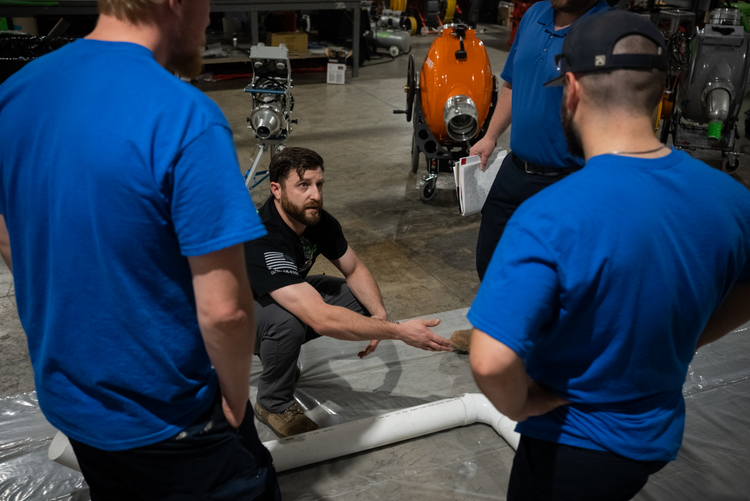
The Longevity of CIPP Trenchless Pipe Repairs: A Closer Look at ASTM S
Introduction
In the world of trenchless pipe repair, the CIPP (Cured-In-Place Pipe) method has emerged as a game-changer, offering a cost-effective and minimally disruptive solution for rehabilitating damaged pipelines. When CIPP installations adhere to the rigorous standards set by the American Society for Testing and Materials (ASTM), the resulting repairs can offer impressive longevity. In this blog, we delve into the role of ASTM standards in ensuring the durability of CIPP trenchless pipe repairs and explore the factors that influence the lifespan of these rehabilitated pipes.
ASTM Standards: A Foundation for Quality
ASTM International, formerly known as the American Society for Testing and Materials, is a globally recognized organization that develops and publishes technical standards for a wide range of materials, products, systems, and services. When it comes to CIPP / Trenchless pipe repairs, adherence to ASTM standards plays a crucial role in ensuring the quality and durability of the repairs.
ASTM Standard F1216
One of the key ASTM standards related to CIPP / Trenchless pipe repairs is ASTM F1216, titled "Standard Practice for Rehabilitation of Existing Pipelines and Conduits by the Inversion and Curing of a Resin-Impregnated Tube." This standard outlines the procedures, materials, and quality control measures required for the successful installation of CIPP liners. By complying with ASTM F1216, repair professionals can ensure that the installed CIPP liners meet the highest industry standards, resulting in long-lasting and reliable pipe rehabilitation.
Factors Influencing CIPP Longevity
Several factors can influence the longevity of CIPP trenchless pipe repairs, even when they comply with ASTM standards:

-
Material Quality: The choice of CIPP liner material and the quality of the resin used play a significant role in determining the durability of the repair. High-quality materials that meet ASTM standards are more likely to withstand the challenges of the underground environment. Each product offering at American Pipelining Supplies goes through rigorous and comprehensive testing to ensure that it will meet and/or exceed all ASTM standards to ensure the highest quality product possible.
-
Installation Expertise: Proper installation techniques, including accurate liner inversion, placement, inflation, and curing, are essential for achieving a reliable repair. Well-trained and experienced technicians following ASTM guidelines contribute to the longevity of the repair.
-
Environmental Conditions: The operating environment of the rehabilitated pipe, including factors like temperature fluctuations, chemical exposure, and soil conditions, can impact the lifespan of the repair. Adhering to ASTM standards helps ensure the liner's resilience to these conditions.
-
Pipe Integrity: The structural integrity of the host pipe (the pipe being repaired) also plays a role. While the process of lining the host pipe will automatically improve the structural integrity of the host pipe, if the host pipe is severely degraded, the CIPP repair might not be as long-lasting, due to additional exposure to the surrounding the host pipe.
-
 Maintenance and Inspection: Regular maintenance and periodic inspections help identify potential issues early on and allow for timely repairs, enhancing the overall lifespan of the CIPP repair. We encourage our installers to include a clause in their contracts ensuring that any additional work on the repaired section of the line must be completed by them. This ensures the integrity of the original installer's work will not be compromised by a less qualified repair technician, while also helping to secure any future work that may be needed in the home.
Maintenance and Inspection: Regular maintenance and periodic inspections help identify potential issues early on and allow for timely repairs, enhancing the overall lifespan of the CIPP repair. We encourage our installers to include a clause in their contracts ensuring that any additional work on the repaired section of the line must be completed by them. This ensures the integrity of the original installer's work will not be compromised by a less qualified repair technician, while also helping to secure any future work that may be needed in the home.
Longevity Expectations
When installed in accordance with ASTM standards and considering the factors mentioned above, CIPP trenchless pipe repairs have been known to last for several decades. Some industry experts suggest that a well-executed CIPP repair can extend the life of a pipe by 50 years or more.
Conclusion
CIPP trenchless pipe repairs, when performed in compliance with ASTM standards, offer a durable and long-lasting solution for rehabilitating damaged pipelines. The stringent guidelines set by ASTM ensure that the repair materials and methods meet the highest quality standards, contributing to the extended lifespan of the repaired pipes. As technology and industry knowledge continue to advance, CIPP / Trenchless pipe repairs are likely to remain a reliable and effective method for enhancing the longevity of underground pipelines while minimizing disruption and cost.
